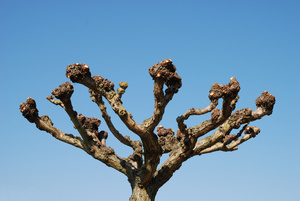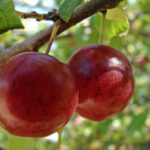Trimming and pruning trees and bushes are important lawn care practices. Nicely trimmed trees not only add beauty to your garden landscape, but also spur growth of fresh foliage, flowers and fruits.
Trimming is essential to control its shape and growth especially when you first transplant a tree. You can also trim branches at different times of the year for aesthetics or to remove dead and damaged growth. Early spring is a good time to trim tree branches because you can see the tree’s shape and branch pattern without the foliage – this makes shaping very easy. Summer is a time for lush foliage growth – light trimming is a good way to encourage growth. Fall and winter trimming are usually targeted at removing dead zones in your trees.
However, some trees have characteristics that restrict the time when they can be pruned. For example, many flowering trees set their blossoms a whole year prior to blooming. You must trim them 3-4 weeks after they blossom and not sooner or later so that you do not lose the blossoms. Determine the trimming requirements for the trees in your lawn before you start trimming.
Carefully examine your tree from different angles to determine what you want to trim. There may be suckers coming from the roots, watersprouts shooting off from branches, crowding branches, crossing limbs, etc. Make a sketch on paper and note down the regions you want to trim. Plan to trim branches in a way that the top and base of the tree are well balanced both for aesthetics and to provide stability to the tree especially when it is laden with foliage and fruits. For developing a tall tree, trim branches on the inside of the buds – this removes buds that can grow wide branches and stems. For a wide foliage, trim in a way that you preserve the buds.
Use sharp tools and always make smooth cuts. Smooth cuts heal faster than jagged ones and are definitely more visually pleasing. Consider the following tools for your tree trimming project.
• A hand-pruner is a good garden tool for cutting bushes, hedges, stems, ornamental trees, etc. It is lightweight and good for cutting wood less than 1″ thick in diameter.
• A pruning-saw can cut branches over 3″ wide in diameter. It has a sturdy blade with sharp teeth and an easy handgrip.
• A lopper is a pruning tool meant for trimming branches that are too thick for a hand-pruner and too thin for a hand-saw. It is particularly useful to trim fruit trees.
While cutting large and thick branches use the following three-step approach.
• First make a deep cut on the bottom of the branch to be cut without detaching it. The cut must be a few inches away from the collar.
• Make a second cut on the top of the branch such that it is a few inches away from the first cut and farther away from the collar. Again do not detach the branch with this cut.
• Finally make a smooth and complete cut at the stump adjacent to the trunk leaving about an inch of the stump attached to the tree. The tree will heal from the cut in a few weeks.
Remember not to stand in the area where the debris from trimming is likely to fall. Use a ladder to reach far out branches and wear goggles for eye-protection when you trim trees.





